By Robert Bruce
“Increasing lethality will be possible by integrating technology into the individual soldier’s weapon. Through the use of laser range finders, ballistic computers, and miniature electronic fuzes, the soldier will be able to precisely place a fragmenting warhead at or near the target…in defilade or behind obstacles.” Vernon E. Shisler, Head of Plans, Programs, and Projects, Joint Service Small Arms program Office
OBJECTIVE FORCE WARRIOR is the second of three stages in developments underway in the US military to make sure the American fighting man will be able to dominate any potential enemy soldier for the next 20 years. OFW will be followed by FUTURE WARRIOR sometime around 2020. Each step will take advantage of existing, emerging, or theoretical technologies to continually upgrade his lethality, survivability and multi-mission effectiveness against any threat, day and night, on any terrain and in all weather conditions.
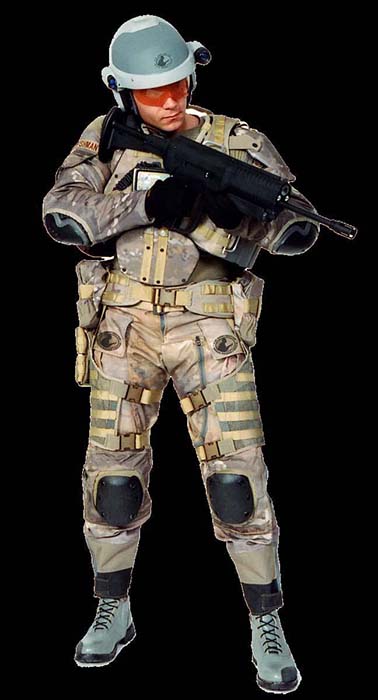
A System of Systems
Although it is tempting to make fun of all the technical jargon and science-speak routinely used in official releases and presentations, acronyms like “C4ISR” (command, control, communications, computers, intelligence, reconnaissance) are useful shorthand among serious participants. Upgrades to LAND WARRIOR’s hardware and software modules will more completely integrate OFW squads with parallel and higher command elements on the digital battlefield, making them full partners in C4ISR. In addition, they will enjoy unprecedented survivability, agility, sustainment, and most importantly – lethality.
Survivability is perhaps the tallest order on battlefields that are growing increasingly lethal, beyond traditional ballistic and blast threats to a seemingly endless inventory of killing and crippling mechanisms. Some of these weapons include chemical, biological, and directed energy (lasers, microwaves, etc.), as well as environmental extremes. In response, OFW will get better body armor, improved NBC protective suit and filtration, heating or cooling as needed.
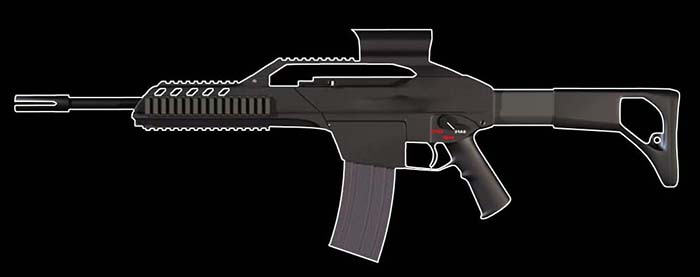
Agility – the ability of each soldier to quickly move around the battlespace – is expected to come from lightening his load. OFW’s gear and weaponry are supposed to total no more than 40 pounds with all the squad’s extra necessities stowed in a robotic mule. Human performance is also on the get-better list from strict standards of age and physical fitness combined with high-energy nutrients and even “pharmacological advances” (jet fighter pilots already take small doses of amphetamines on extended missions).
Unaided sustainment for 72 hours is another program goal where the OFW squad will have on hand all the food, water, ammo, electrical power and everything else needed to accomplish its mission. The mule is a big part of this with on-board generator, water purification, and plenty of room for all sorts of supplies. Microclimate heating and cooling devices built into uniform undergarments will keep the soldier at least relatively comfortable as ambient temperatures and exertion levels change.

Lethality – the foot soldier’s bottom-line capability – is expected to get a big boost with some hardware already in the pipeline and then some more tools that haven’t yet made it off the drawing board. OFW will be able to find his adversaries with the aid of a variety of air and ground robotic scouts, then kill or neutralize them with his own weapons or by calling in pinpoint strikes from artillery and air power.
Objective Individual Combat Weapon
OICW, now known as the Integrated Air Burst Weapon and recently given official designation as the XM29, is a technological marvel that will give the infantry squad’s grenadiers unprecedented accuracy and lethality.
The XM29 is well on its way to overcoming limitations inherent in the M4 carbine/M203 grenade launcher combo in significant ways including computerized fire control for all light and weather conditions, more than double the range, and “smart” ammo for pinpoint airbursting to take out enemy troops behind cover. Let’s take a closer look at how the Army and ATK Integrated Defense – charged with making everything work together – are using a team of industry experts providing four separate components that work in harmony to do the job.
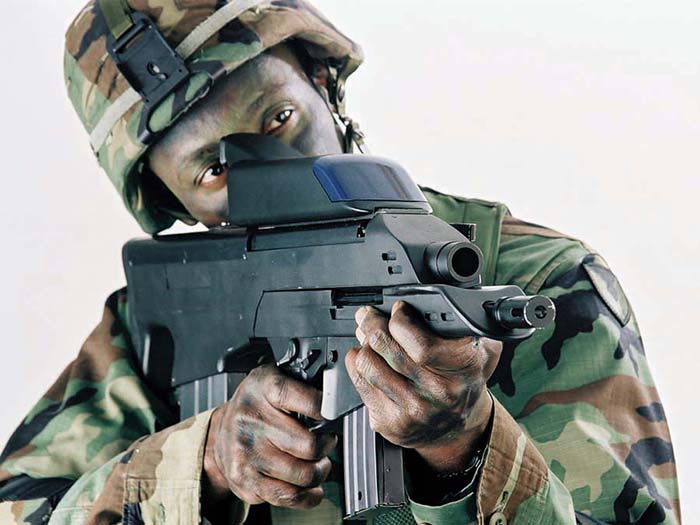
Brashear LP has the weapon’s fire control system, bringing a degree of fighter jet sophistication to the series of complex tasks necessary for target detection and neutralization round-the-clock. Somehow they have managed to stuff a laser range finder, direct view optics, thermal imager, ballistic computer, fuze setter, environmental sensors, and a compass into a housing not much bigger and heavier than a cop’s four-D-cell flashlight.
ATK itself makes the High Explosive Air Burst (HEAB) ammo, cleverly placing tiny electronic components for computation and initiation between two fragmenting warheads. Among many daunting challenges that have been overcome are miniaturization, launch shock, safety, reliability, and lethality. Objections to current per-round cost, which will no doubt drop during mass production, are also countered by projections of dramatically improved combat effectiveness so that less ammo has to be carried and fired.
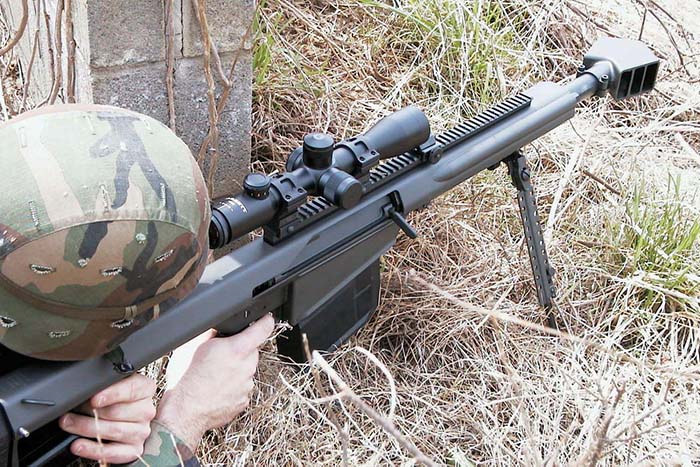
The soldier finds his target in daylight using the optical scope and in darkness or behind smoke using the built-in thermal imager. The laser provides exact range simultaneously to the computer and the chambered 20mm grenade, and then puts a dot representing the correct aim point into the viewfinder display. Elevating the weapon until the dot is on the target assures correct ballistic geometry for launching a “smart” round that counts its rotations as it flies out and detonates right above the enemy fighting position.
Ongoing live-fire testing has convincingly demonstrated this capability and the Army expects fielded systems to be five times more lethal at twice the range of the current M203 40mm grenade launcher.
The HEAB round is launched from a remarkably up-engineered version of HK’s innovative Close Assault Weapon with “elastomerics” to absorb most of the kick on firing. A detachable box-type magazine feeds five rounds for fast semiautomatic function.
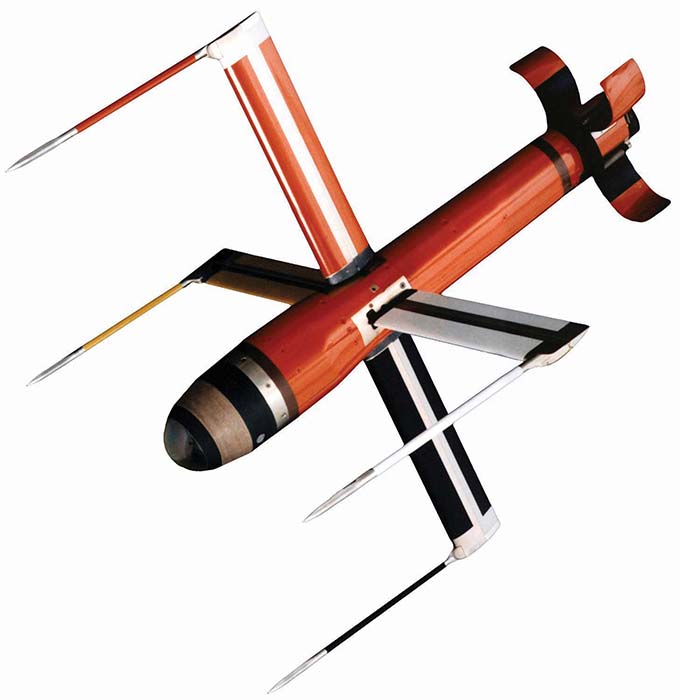
Traditional direct fire target perforation has not been neglected in the system and HK is also providing the “kinetic energy” (KE) weapon component. Fans of their G36 rifles and carbines will be pleased to know that a chopped G36 is tucked neatly under the 20mm, offering both semiautomatic and burst firing of NATO standard 5.56x45mm ammunition. And yes, the whiz-bang fire control module automatically provides its aiming reference when KE is selected.
Block 1 weapons (first version for production) have successfully met all testing standards and are expected to be issued to the first units – probably special operations – as an upgrade to LAND WARRIOR sometime in the next several years. But the program is not standing still and advances in science are being incorporated or planned for subsequent variants. Follow-on versions to arm OBJECTIVE FORCE WARRIOR are likely to take advantage of such things as composite materials, ceramic barrels, fuel cells, wireless connectors, nano technologies, and more. These will decrease weight, cost and bulk, while increasing ruggedness and lethality.
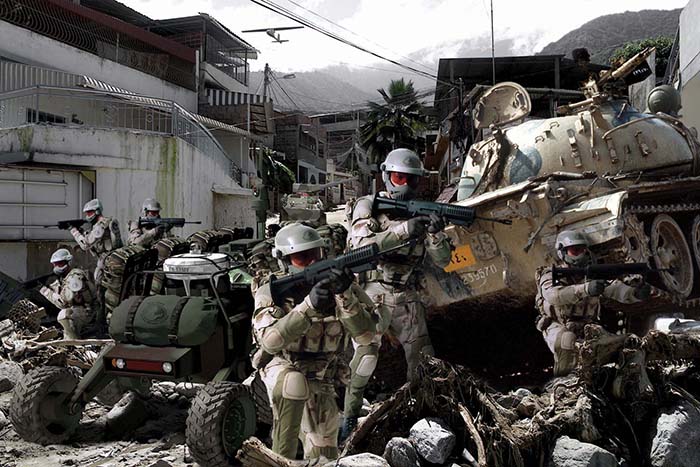
Objective Crew Served Weapon and Payload Rifle
OCSW is now known officially as the XM307, a 25mm big brother to the infantryman’s shoulder-fired XM29. Intended to replace both the venerable .50 caliber M2HB machine gun and the 40mm Mark 19 grenade machine gun, the XM307 uses multifunction computerized fire control and “smart” ammo.
Defense industry giant General Dynamics is in partnership with the Joint Services Small Arms Program to develop this lightweight, two-man portable system that is expected to be fielded as early as 2007 in a multitude of roles from infantry in the dirt to sophisticated land, sea and air fighting vehicles.
OCSW’s highly developed electronic fire control includes a laser range finder, ballistic computer, all weather day/night sight, and automatic range setting of each round of programmable ammo as it is chambered.

Since it doesn’t have to be fired from a human shoulder it can launch a bigger, heavier round to much greater distances so its 25mm projectile flies out to more than 2,000 meters with a larger payload. Its high explosive airbursting warhead produces casualties over a significantly wider area and the armor piercing load can punch through 2 inches (51mm) of steel plate.
Although the system and its ammo are much more expensive than the two weapons that will be replaced, the latest computer modeling and projections by respected logistics and combat experts show a net gain due to the need for far fewer rounds to do the job.
The OCSW’s formidable 25mm round has recently been drafted for service in Ronnie Barrett’s awesome “Payload Rifle,” the latest in his line of big-bore blasters. (See photo fo the payload rifle on page 74) Barrett’s .50 caliber sniper and antimaterial rifles have been standard in US and allied armies since way before Desert Storm and this seems to be a logical progression for situations where the relatively heavy and bulky XM307 is not feasible. According to Army and industry sources, special operations forces are particularly excited about the 25mm’s devastating effects on a variety of high-value targets.
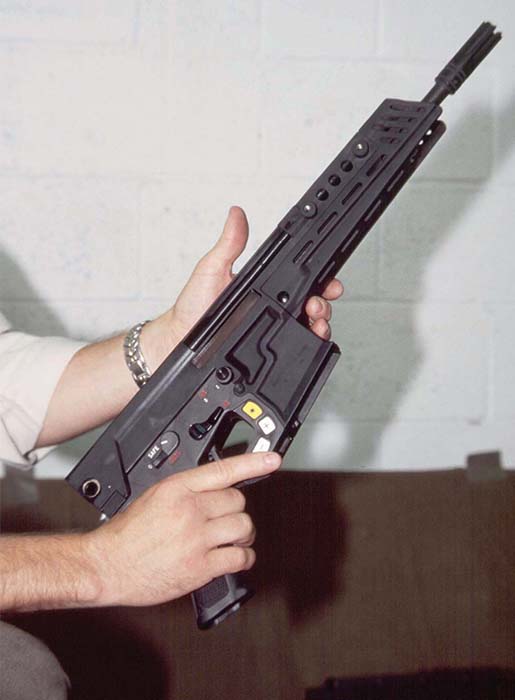
Lightweight Weapons
A loaded and fully accessorized M4 carbine easily pushes 12 pounds and the Block 1 XM29 several pounds more. Similarly, the M249 SAW has a 24-pound weight penalty carrying 200 rounds of relatively puny 5.56x45mm belted ammo. There is much room for improvement.
Joint Services Small Arms program (JSSAP) gurus know we can do better and have begun brainstorming some ideas for cutting weight by 40% or more without reducing effectiveness. If funding comes through, real work will begin with the latest in composite receivers, ceramic materials, caseless ammo, and other promising technologies to field a 5-pound carbine and a 14-pound SAW. These are intended to compliment the highly sophisticated XM29 in situations such as quick reaction, close range direct fire.
OFW on the World WideWeb: www.Natick.army.mil/soldier/wsit/index.htm

Next Month
Improvements to OBJECTIVE FORCE WARRIOR and astonishing technological advances are showing the way to the Army’s next step; FUTURE WARRIOR. Read about how visionary scientists and engineers imagine the battlefield of 2020 and are working now to ensure that America’s fighting forces can continue to maintain significant advantages in warfighting capabilities. What are the implications for mankind in fielding microminiature combat robots, mind-altering energy fields, and more?
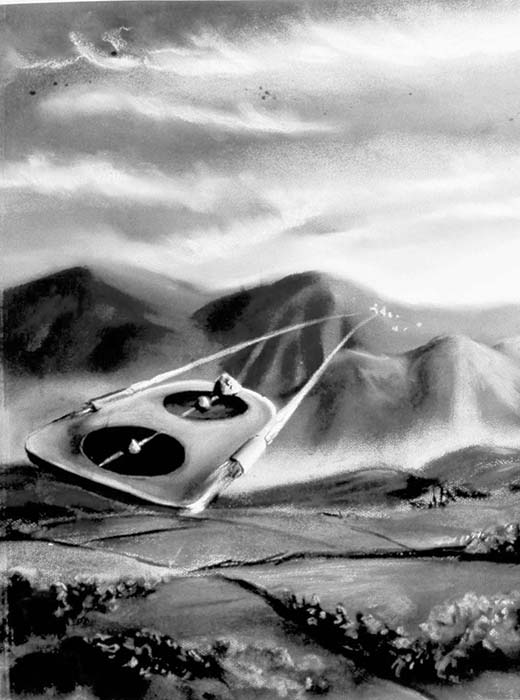
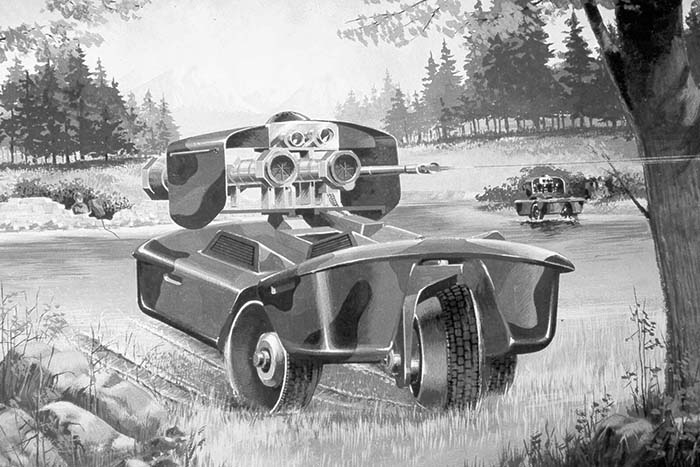
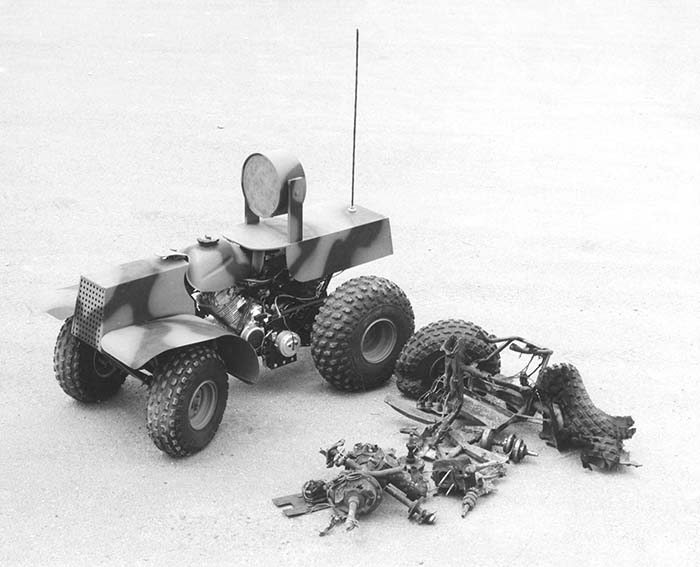
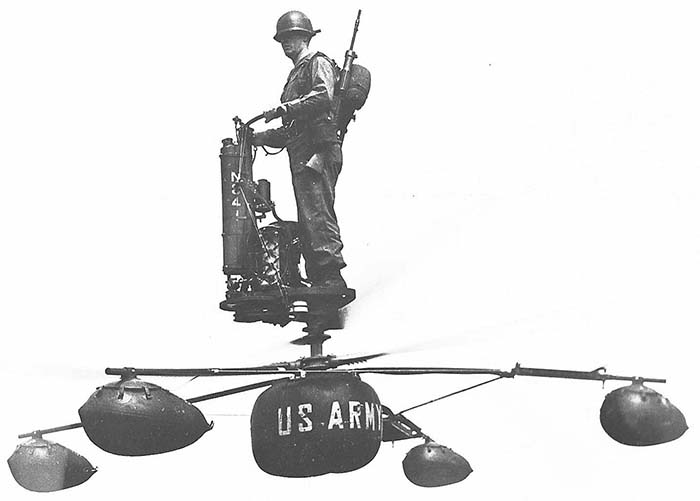
| This article first appeared in Small Arms Review V7N9 (June 2004) |










